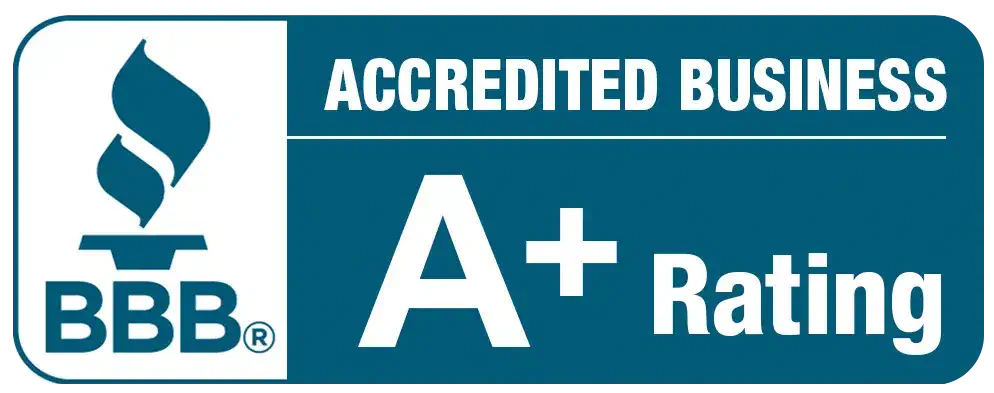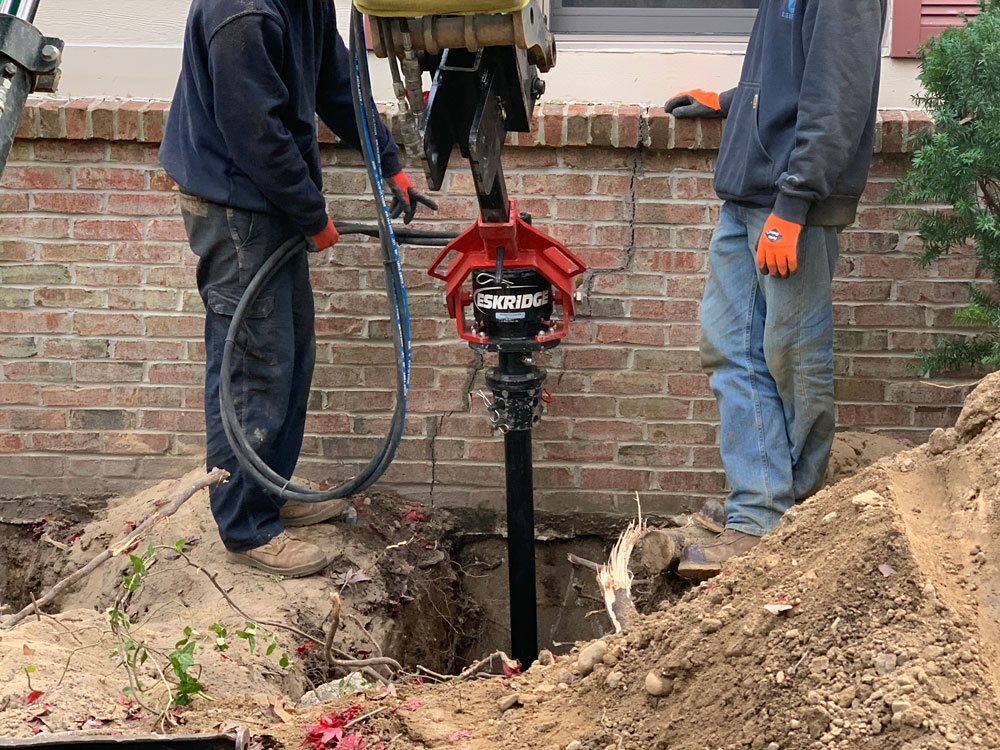Welcome to the Ultimate Guide to Foundation Repair! The foundation of a building is crucial to its stability and longevity. A strong and stable foundation supports a building to withstand natural disasters, soil movement, and daily use’s general wear and tear. The structural integrity of foundations is often compromised over time by foundation problems. In this foundation repair article, we aim to provide detailed information on methods and costs so that you can make an informed decision.
Here are more details about why foundation repair is important, what it does, and how it works.
Signs of Foundation Problems
Identifying and addressing foundation problems as soon as possible can protect a building’s structural integrity. Several common signs of foundation problems should be watched out for by property owners:
Cracks in the walls and floors
A crack in a wall, especially near a window or door, is a frequent sign of foundation problems. A horizontal crack may appear around a window or door and is typically horizontal.
Uneven Floors
If your home has uneven floors, your foundation has shifted or settled. This unevenness can cause floors to slope or sag, and you may notice that furniture doesn’t sit level on the floor.
Sticking doors & window
Another foundation problem sign is doors and windows that are difficult to open or close. This problem changes the house’s structure, making door and window frames warp or misalign.
Cracked Foundation
A cracked foundation is a major red flag that your home has problems. Cracks can develop from various issues, including soil movement or water damage.
Sagging Roofline
When a foundation fails, the roof sags or dips in certain areas. If you notice any dips or sags in your roofline, it’s best to inspect immediately.
Consequences of Not Addressing Foundation Problems
Ignoring foundation problems may have severe consequences. Here are some potential risks of not addressing foundation problems:
- Decreased Home Value—Foundation problems can significantly decrease your home’s value. If you plan on selling your home, addressing foundation issues before listing it on the market is imperative.
- Structural Damage—Left untreated, foundation problems can cause serious structural damage to your home. Walls can shift, floors can buckle, and doors and windows may become permanently damaged.
- Safety Risks—Foundation problems can also create safety risks for you and your family. Uneven floors and sticking doors and windows can be a tripping hazard, and a sagging roofline can be dangerous if it collapses.
- Costly Repairs—Repair can become increasingly costly if you don’t address foundation problems early on. For example, if you don’t fix a crack in your foundation, it can damage water. You’ll also have to repair any damage caused by water.
Causes of Foundation Problems
Several factors can cause foundation problems. These factors include:
Soil Conditions
A foundation’s stability is highly dependent on the soil conditions. A foundation gets damaged by insufficient compaction of the soil beneath it. The expansion of soil, eroding soil, and consolidated soil are all factors that can cause foundation shifts that result in cracks.
Water Damage
Water is often the cause of foundation problems. If the soil around the foundation absorbs water, the ground can expand, resulting in foundation movement. There can be cracks and other issues caused by the constant movement of the foundation.
Poor Construction
Construction also leads to foundation problems. Buildings constructed on weak soil, inadequate footings, and uneven grading can fail.
Tree Roots
Large trees planted too close to the foundation can also cause problems. As tree roots absorb moisture from the soil, the ground shrinks, and foundations become unstable. Cracks can occur when the foundation shifts.
These factors contribute to foundation repair. Cracks in the foundation can quickly escalate unless addressed.
Types of Foundation Maintenance Methods
Regarding foundation repair, various methods are available depending on the severity of the problem. Each method has a different way of fixing foundation damage. Here are the most commonly used foundation repair methods:
Slab Jacking
This process lifts sunken concrete slabs back to their original positions. This method involves drilling small holes in the hollow slab and injecting a grout mixture underneath until the slab rises. The grout mixture combines cement, water, and other additives that fill the void spaces and create a solid base beneath.
Piering
This method involves installing steel piers beneath the damaged foundation to provide support. These piers get driven deep into the ground to reach the bedrock or stable soil layer. Once the piers get installed, they are adjusted to lift and level the foundation.
Concrete Resurfacing
This method involves repairing small cracks on the foundation surface. Contractors use a special concrete mixture to fill gaps and chip out damaged areas. After the repairs, the character gets smoothed out to create a uniform look.
Carbon Fiber Reinforcement
This method utilizes carbon fiber straps to reinforce foundation walls that bow inward. Straps are applied to damaged walls to immobilize them and prevent further damage. Carbon fiber reinforcement is a strong and durable solution that supports foundation walls.
Grout Injection
This method reinforces the soils that surround the foundation. Grout is injected into the ground beneath and around the damaged foundation to increase its load-bearing capacity. This method stabilizes the foundation by preventing further settlement.
Note: The choice of foundation repair method depends on the damage’s extent and the project’s specific needs.
Foundation Maintenance Process
Here are the steps involved in foundation repair:
Step 1: Inspection
Identify the problem’s cause and the damage’s extent by inspecting the property thoroughly. An evaluation of the foundation’s structure and identification of cracks and other signs of wear are also necessary.
Step 2: Diagnosis
Upon inspection completion, the contractor will diagnose the problem and recommend the appropriate action. Foundation repairs may involve filling in cracks, installing support beams or piers, or other methods.
Step 3: Cost Estimate
Contractors will provide detailed estimates of repair costs to property owners. Several variables, such as damage extent, foundation type, and repair method, determine estimates.
Step 4: Repair Planning
Foundation repair contractors will develop a repair plan that includes the necessary materials, labor, and equipment once the property owner approves the estimate.
Step 5: Repair Execution
When the contractor has the repair plan, they will carry out the repairs, which may take several days or weeks. A specialist’s tools and equipment get used to repair cracks, install support beams, or fix the foundation.
Step 6: Final Inspection
After the repairs, the contractor will conduct a final inspection to ensure the foundation is stable and structurally sound. This step is essential to ensuring the property’s safety and longevity.
The Role of a Foundation Repair Contractor
Foundation repair contractors have training, experience, and specialization in foundation damage. They diagnose the problem, recommend a course of action, and execute the repair plan.
Some of the key responsibilities of a foundation repair contractor include the following:
- Determine the extent of the damage and the cause of the problem by inspecting the property thoroughly.
- Fix the problem by diagnosing and recommending the appropriate action.
- Provide the property owner with a detailed estimate of repair costs.
- Plan the repairs, including materials, labor, and equipment.
- Repair cracks and install support beams using specialized tools and equipment.
- Verify the stability of the foundation and its structural integrity.
The role of a foundation repair contractor is crucial to the property’s safety and longevity.
How to Prevent Foundation Problems
A strong and healthy foundation is essential for your home’s stability and value. Now that you know how foundation problems can be costly to Maintenance and potentially lead to serious structural issues if left unaddressed. We have good news for you!
The good news—There are preventative measures you can take to prevent foundation problems from occurring in the first place.
Regular maintenance and inspections, for example, can often detect minor problems before they become more serious.
Tips for maintaining a healthy foundation:
Tip #1: Keep an Eye on Your Home’s Drainage
The most common cause of foundation problems is poor drainage. If water pools around your home’s foundation, it can seep into the soil and expand and contract, leading to cracks and other issues. Install a French drain or another drainage system to ensure your gutters are clean.
Tip #2: Monitor the Soil Around Your Home
The soil around your home is critical to your foundation’s health. The foundation can shift and crack if the soil is too dry or wet. Monitor the ground and consider using a soaker hose to maintain consistent moisture levels.
Tip #3: Avoid Planting Trees Too Close to Your Home
Trees provide shade and beauty, but their roots can wreck your foundation. As roots grow and expand, they can push against the foundation and cause cracks. Avoid planting trees too close to your home, and consider removing any trees that pose a risk.
Tip #4: Address Minor Issues ASAP
If you notice cracks or other minor issues with your foundation, don’t wait to address them. The longer you wait, the more costly and complex the repairs may become. Contact a reputable foundation repair company to assess the situation and recommend the right action.
Cost of Foundation Maintenance
Foundation Maintenance costs can vary significantly based on several factors. These factors include:
- The severity of the damage,
- The size and type of your home,
- The kind of foundation,
- The repair materials,
- Your home’s location, and
- The extent of the repair work required.
Now let’s look at the cost estimates for each foundation repair method.
Concrete foundation repair
Concrete foundation repair costs can range from $500 to $3,000 or more, depending on the scope of the work. It includes materials and labor costs for repairs such as patching, epoxy injection, or slab jacking.
- Slabjacking costs vary depending on the size of the area to repair, but it typically costs between $1500-$3000.
- Grout injection costs vary depending on the extent of the damage but can cost between $1000-$3000.
- Carbon fiber reinforcement prices are anywhere from $500-$2000.
Structured foundation repair
They are typically more expensive than concrete repairs. This method involves installing piers or underpinning systems to stabilize the foundation. Structured foundation repair costs vary widely depending on the type and number of supports needed. However, they can range from $1,000 to $10,000 or more.
- Piering costs can vary from $1000 to $5000 per pier, depending on the type of pier used and the extent of the damage.
- Concrete resurfacing prices range from $3000-$7000 depending on the area’s size and damage extent.
The most suitable foundation repair method depends on your home’s needs and the extent of the damage. It’s always wise to consult a professional foundation repair company to determine the right action.
Foundation repair inspections are usually free as part of their initial evaluation. However, some companies may charge a fee for a more in-depth review or a detailed estimate of repair costs.
Overall, foundation repair and basement waterproofing can be a significant investment. However, addressing any issues is crucial to avoid further damage and potentially more expensive repairs. Working with a reputable and experienced professional is critical for the best results when considering foundation repair methods and costs.





